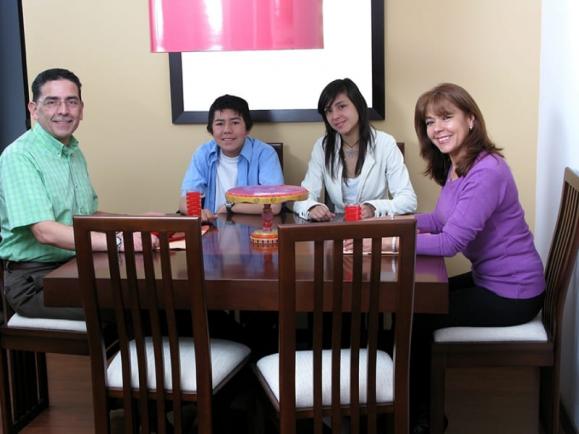
There is a powerful tool for good right in your own home. It has the power to unite families, solve real world problems, create laughter and heal old wounds. It is the dinner table and, when used regularly, will have a powerful effect on your family.
Here are the simple instructions for use (You probably threw them away when you opened the box, or maybe the delivery man neglected to leave them or perhaps when you inherited it, the instructions were not passed down. Never mind. We'll get you up to speed.)
Assembly
Pull chairs away from table. Invite family to sit in the chairs. Scoot chairs in. Move on to step 2.
Table setting
Your family is one of the greatest forces for good in the world. Treat them as the royalty they are. Clear away clutter. Set finest dishes and flatware. Fill glasses with water and ice. Place a centerpiece. See step 3.
Centerpiece
Change up your centerpiece nightly and set a different theme for the evening. Make it a conversation starter. Perhaps, a good report card. Maybe, a family photo album. Some fresh-cut flowers from your garden. A newspaper article that bears conversation. Go to step 4.
Disconnect
Ask family members to leave tablets, phones and all other outside influences far away from the dinner table. This is an exclusive club and opportunity. Friends can wait. Now, time for step 5.
Food
Optional
Prepare a nice meal, nothing fancy, and serve in nice dishes. Pass clockwise around the table until everyone is served. Optional: Serve your family yourself, or rotate servers every night from among family members. Remember to serve from the left. Clear from the right. Move to step 6.
Optional: Prayer
Have the head of the household choose someone, or ask for volunteers to offer a prayer of thanksgiving for family and a blessing on the food.
Opening inquiry
Have the head of the table ask, "What was the highlight of your day?" of the person to his left. Each member of the party in turn answers and asks the question of the person to their left until all have answered, ending with the head of the table. Allow free discussion of each person's day. Take a breather, and then go to step 8.
Concerns
Because life is not always full of highlights, send out the question, "Does anyone have anything troubling him that the family can help with?" When topics are brought up, allow the family members to fully present their concern before opening the table for advice. Let each "counselor" present a solution without interruption before going on to the next "counselor." Allow the member with the concern to have the last say in which solution he chooses. Invite him to share which solution he chose, but don't make it mandatory. Allow a few moments, and go to step 9.
Random topic
I love these. Pick a random news story and ask each person what her take is on it. What would she do if she were in the situation? This is a great way to really get to know the members of your family and their sensibilities. See also step 10.
Random question
Alternative to step 9. Ask a random question such as, "If you could be any animal, what would you be and why?" or, "If you could have dinner and conversation with any person, living or dead, who would it be and why?" Close with step 11.
Affirmations
End the meal and conversation by sending out random affirmations. "Dan, you did a great job on your report card." "Mom, this was a wonderful meal. Thank you." "Sarah, I love you and I'm proud of who you've become." This closes the family dinner table experience on an upbeat note.
The power of the dinner table cannot be denied. It is a tool to connect, unite and create solutions. It is a way to intimately know your family and what they stand for. It is a place to be an example, to uplift and to fortify. Most importantly, it is a place to shut out the world for one hour a day. Cherish the hour. Honor the table. Develop a family.

